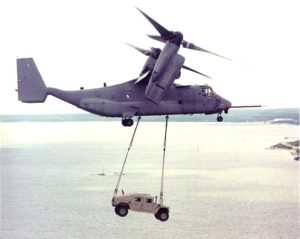The Texas Legislature took a moment before adjourning this week to offer a well-deserved salute to a company that took a gamble that has paid off in a major way.
The company was Bell/Textron, which once used to assemble aircraft in the Fort Worth area. Then in the late 1990s, the Amarillo Economic Development Corporation dangled a significant financial incentive package to lure Bell/Textron away from the Metroplex to the Texas Panhandle.
That was 20 years ago. The Legislature approved a resolution saluting AEDC and Bell/Textron for the decision to relocate to Amarillo. Man, this investment has paid off handsomely.
AEDC lured Bell/Textron to Amarillo with an incentive totaling around $45 million. It included tax abatements and free land next to Rick Husband Amarillo International Airport. Bell/Textron took the bait and built a plant where it assembles V-22 Osprey tiltrotor aircraft, which at the time — and it still is! — was considered a state-of-the-art airplane that can take off like a helicopter and fly like a fixed-wing airplane.
The V-22 has endured some controversy and some tragedy. Planes have crashed, killing service personnel who were aboard. Bell grounded the aircraft while it worked on the issues that caused a particular crash that killed 19 Marines. It fixed the issue.
The plane has been deployed to battlefields in Afghanistan and Iraq, where it ferries troops and supplies to and away from the field of combat. It has worked well.
The AEDC incentive that lured Bell to Amarillo drew plenty of criticism, particularly from the Fort Worth area that lost the corporate neighbor. Metroplex media bitched about how Amarillo was essentially bribing companies to relocate to the region.
Well, I believe they were suffering from sour-grape indigestion.
AEDC collects a half-cent on every dollar in sales tax revenue in Amarillo. It banks that money and then uses it for purposes such as the one that brought Bell/Textron to the Panhandle. AEDC sees the money as an investment on job creation. So it has worked. Some projects have paid off better than others. AEDC has had some misfires along the way, to be sure.
However, the Bell/Textron investment has paid off well for the company, as well as for Amarillo and the rest of the Texas Panhandle.
The Marines are still flying the V-22; the Air Force and Army have signed on as well.
There are time when you need to take a gamble in search of a big return. Amarillo’s economic development planners saw the potential of such a gamble . . . and have reaped the reward.

